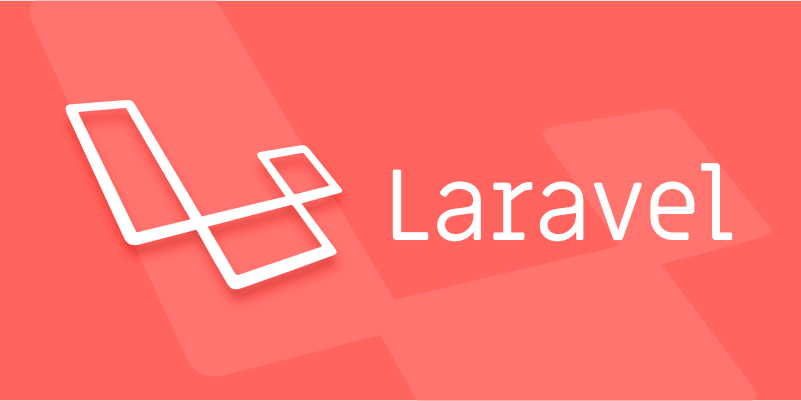Securing Laravel routes with authentication and middleware
Jul 03, 2025 am 12:56 AMTo secure routes in a Laravel application, use authentication and middleware. First, apply the built-in auth middleware to restrict access to authenticated users via route definitions or controller constructors. Second, create custom middleware like EnsureUserIsAdmin for role-based restrictions, register it in Kernel.php, and apply it to routes alongside auth. Third, secure API routes using Laravel Sanctum by assigning API tokens and applying the auth:sanctum middleware, ensuring tokens are included in the Authorization header during requests.

When building a Laravel application, securing routes is essential to protect sensitive functionality and data. This typically involves using authentication and middleware — two powerful tools Laravel provides out of the box. Let’s break down how to use them effectively.

How Authentication Protects Routes
Laravel comes with a built-in authentication system that makes it easy to verify users before allowing access to certain parts of your app. The most straightforward way to secure a route is by using the auth middleware.

For example, if you have a dashboard page that should only be visible to logged-in users, you can apply the middleware directly in your route definition:
Route::get('/dashboard', function () {
return view('dashboard');
})->middleware('auth');Behind the scenes, this checks whether the user is authenticated. If not, they’ll be redirected to the login page. No need for extra checks — Laravel handles it all.

You can also apply this in a controller constructor, which is cleaner when dealing with multiple methods:
public function __construct()
{
$this->middleware('auth');
}This ensures that any method in the controller is only accessible to authenticated users.
Using Custom Middleware for Specific Access Rules
Sometimes just being logged in isn’t enough — you might want to restrict access based on roles or permissions. That’s where custom middleware comes in handy.
Let’s say you have an admin area that only users with the “admin” role can access. First, create the middleware:
php artisan make:middleware EnsureUserIsAdmin
Then, in the generated file under app/Http/Middleware, add your logic:
public function handle($request, $next)
{
if (! $request->user()->isAdmin()) {
abort(403, 'Unauthorized action.');
}
return $next($request);
}Register the middleware in app/Http/Kernel.php under $routeMiddleware:
'admin' => \App\Http\Middleware\EnsureUserIsAdmin::class,
Now you can apply it like any other middleware:
Route::get('/admin', function () {
return view('admin.dashboard');
})->middleware(['auth', 'admin']);This way, only authenticated users who pass the admin check can access the route.
- You can stack multiple middleware layers.
- Order matters: the request goes through them from left to right.
- Always test unauthorized access scenarios during development.
Securing API Routes with Token or Sanctum Authentication
If you're building an API with Laravel, traditional session-based auth won’t cut it. Instead, you can use Laravel Sanctum or Passport for token-based authentication.
With Sanctum, each user gets an API token. When defining API routes, use the auth:sanctum guard:
Route::middleware('auth:sanctum')->get('/user', function (Request $request) {
return $request->user();
});To generate tokens, you can do something like this in your controller:
$token = $user->createToken('API Token Name')->plainTextToken;Make sure to include this token in the Authorization header when making requests:
Authorization: Bearer [your-token-here]
Sanctum is lightweight and perfect for SPAs or mobile apps that communicate with your Laravel backend.
That covers the main ways to secure Laravel routes — using built-in auth, creating custom middleware for specific rules, and handling API access. It's not complicated once you understand how the pieces fit together, but it’s easy to miss small details like middleware order or token setup.
The above is the detailed content of Securing Laravel routes with authentication and middleware. For more information, please follow other related articles on the PHP Chinese website!

Hot AI Tools

Undress AI Tool
Undress images for free

Undresser.AI Undress
AI-powered app for creating realistic nude photos

AI Clothes Remover
Online AI tool for removing clothes from photos.

Clothoff.io
AI clothes remover

Video Face Swap
Swap faces in any video effortlessly with our completely free AI face swap tool!

Hot Article

Hot Tools

Notepad++7.3.1
Easy-to-use and free code editor

SublimeText3 Chinese version
Chinese version, very easy to use

Zend Studio 13.0.1
Powerful PHP integrated development environment

Dreamweaver CS6
Visual web development tools

SublimeText3 Mac version
God-level code editing software (SublimeText3)
 Working with pivot tables in Laravel Many-to-Many relationships
Jul 07, 2025 am 01:06 AM
Working with pivot tables in Laravel Many-to-Many relationships
Jul 07, 2025 am 01:06 AM
ToworkeffectivelywithpivottablesinLaravel,firstaccesspivotdatausingwithPivot()orwithTimestamps(),thenupdateentrieswithupdateExistingPivot(),managerelationshipsviadetach()andsync(),andusecustompivotmodelswhenneeded.1.UsewithPivot()toincludespecificcol
 Sending different types of notifications with Laravel
Jul 06, 2025 am 12:52 AM
Sending different types of notifications with Laravel
Jul 06, 2025 am 12:52 AM
Laravelprovidesacleanandflexiblewaytosendnotificationsviamultiplechannelslikeemail,SMS,in-appalerts,andpushnotifications.Youdefinenotificationchannelsinthevia()methodofanotificationclass,andimplementspecificmethodsliketoMail(),toDatabase(),ortoVonage
 Understanding Dependency Injection in Laravel?
Jul 05, 2025 am 02:01 AM
Understanding Dependency Injection in Laravel?
Jul 05, 2025 am 02:01 AM
Dependency injection automatically handles class dependencies through service containers in Laravel without manual new objects. Its core is constructor injection and method injection, such as automatically passing in the Request instance in the controller. Laravel parses dependencies through type prompts and recursively creates the required objects. The binding interface and implementation can be used by the service provider to use the bind method, or singleton to bind a singleton. When using it, you need to ensure type prompts, avoid constructor complications, use context bindings with caution, and understand automatic parsing rules. Mastering these can improve code flexibility and maintenance.
 Strategies for optimizing Laravel application performance
Jul 09, 2025 am 03:00 AM
Strategies for optimizing Laravel application performance
Jul 09, 2025 am 03:00 AM
Laravel performance optimization can improve application efficiency through four core directions. 1. Use the cache mechanism to reduce duplicate queries, store infrequently changing data through Cache::remember() and other methods to reduce database access frequency; 2. Optimize database from the model to query statements, avoid N 1 queries, specifying field queries, adding indexes, paging processing and reading and writing separation, and reduce bottlenecks; 3. Use time-consuming operations such as email sending and file exporting to queue asynchronous processing, use Supervisor to manage workers and set up retry mechanisms; 4. Use middleware and service providers reasonably to avoid complex logic and unnecessary initialization code, and delay loading of services to improve startup efficiency.
 Managing database state for testing in Laravel
Jul 13, 2025 am 03:08 AM
Managing database state for testing in Laravel
Jul 13, 2025 am 03:08 AM
Methods to manage database state in Laravel tests include using RefreshDatabase, selective seeding of data, careful use of transactions, and manual cleaning if necessary. 1. Use RefreshDatabasetrait to automatically migrate the database structure to ensure that each test is based on a clean database; 2. Use specific seeds to fill the necessary data and generate dynamic data in combination with the model factory; 3. Use DatabaseTransactionstrait to roll back the test changes, but pay attention to its limitations; 4. Manually truncate the table or reseed the database when it cannot be automatically cleaned. These methods are flexibly selected according to the type of test and environment to ensure the reliability and efficiency of the test.
 Choosing between Laravel Sanctum and Passport for API authentication
Jul 14, 2025 am 02:35 AM
Choosing between Laravel Sanctum and Passport for API authentication
Jul 14, 2025 am 02:35 AM
LaravelSanctum is suitable for simple, lightweight API certifications such as SPA or mobile applications, while Passport is suitable for scenarios where full OAuth2 functionality is required. 1. Sanctum provides token-based authentication, suitable for first-party clients; 2. Passport supports complex processes such as authorization codes and client credentials, suitable for third-party developers to access; 3. Sanctum installation and configuration are simpler and maintenance costs are low; 4. Passport functions are comprehensive but configuration is complex, suitable for platforms that require fine permission control. When selecting, you should determine whether the OAuth2 feature is required based on the project requirements.
 Implementing Database Transactions in Laravel?
Jul 08, 2025 am 01:02 AM
Implementing Database Transactions in Laravel?
Jul 08, 2025 am 01:02 AM
Laravel simplifies database transaction processing with built-in support. 1. Use the DB::transaction() method to automatically commit or rollback operations to ensure data integrity; 2. Support nested transactions and implement them through savepoints, but it is usually recommended to use a single transaction wrapper to avoid complexity; 3. Provide manual control methods such as beginTransaction(), commit() and rollBack(), suitable for scenarios that require more flexible processing; 4. Best practices include keeping transactions short, only using them when necessary, testing failures, and recording rollback information. Rationally choosing transaction management methods can help improve application reliability and performance.
 Handling HTTP Requests and Responses in Laravel.
Jul 16, 2025 am 03:21 AM
Handling HTTP Requests and Responses in Laravel.
Jul 16, 2025 am 03:21 AM
The core of handling HTTP requests and responses in Laravel is to master the acquisition of request data, response return and file upload. 1. When receiving request data, you can inject the Request instance through type prompts and use input() or magic methods to obtain fields, and combine validate() or form request classes for verification; 2. Return response supports strings, views, JSON, responses with status codes and headers and redirect operations; 3. When processing file uploads, you need to use the file() method and store() to store files. Before uploading, you should verify the file type and size, and the storage path can be saved to the database.






